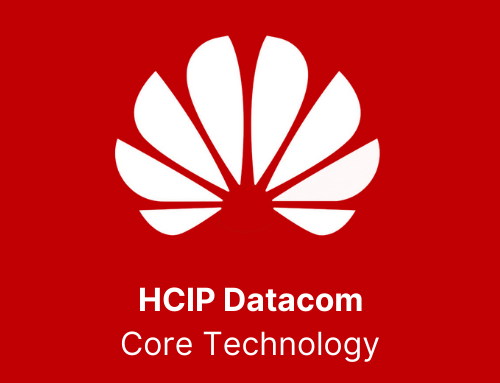
- Profissionais em geral que desejam atuar na área de redes IP, routing e switching utilizando os roteadores e switches da Huawei.
- Engenheiros de pré-vendas e pós-vendas em soluções de routing e switching.
- Parceiros e canais de venda que desejam certificar e habilitar seus funcionários para executar serviços de instalação e implementação.
- Gerentes de TI e Arquitetos em TI.
- Pessoas que buscam a certificação Huawei Certified ICT Associate – HCIA Datacom.
O treinamento proporciona ao aluno conhecimentos relativo aos roteadores e switches Huawei. Você aprenderá técnicas de routing, switching, interfaces LAN & WAN, protocolos, conceitos básicos de segurança de redes, gerenciamento, princípios de Wlan, conceitos essenciais de SDN e automação.
O treinamento é composto por conteúdo teórico e prático, com execução de vários laboratórios práticos de configuração dos equipamentos.
Após a conclusão deste curso, o participante estará capacitado para:
- Descrever os princípios básicos da comunicação de dados
- Fazer operação e manutenção básica de redes IP
- Planejar e projetar endereçamento IP
- Executar operações básicas de VRP
- Descrever as funções dos switches
- Configurar uma rede de switches otimizada, utilizando protocolos STP / RSTP
- Descrever os princípios básicos de roteamento e dos protocolos de roteamento
- Configurar OSPF para construir uma rede de roteamento eficiente
- Configurar serviços comuns em redes corporativas, como DHCP, FTP e Telnet
- Prover melhorias de performance nas redes de switches
- Configurar agregação de links e VLANs
- Configurar PPP, PPPoE para implementar interconexão WAN
- Configurar NAT, ACL e AAA para fornecer controle de acesso a rede
- Conhecer os conceitos essenciais de MPLS e Segment Routing
- Introdução e configuração de redes IPv6
- Conhecimentos básicos de redes e de computadores.
- Conhecimentos básicos de Sistemas Operacionais Windows.
- O curso tem duração de 5 dias – 40 horas de treinamento (conduzido por instrutor) e 2 a 3 dias sugeridos de estudo autônomo (self-study).
Conteúdo programático
- Data Communication Network Basis
- Communication and Networks
- Network Types and Topology Types
- Network Engineering and Network Engineers
- Network Reference Model
- Applications and Data
- Network Reference Model and Standard Protocols
- Data Communication Process
- Huawei VRP
- VRP Overview
- Command Line Basics
- Network Layer Protocols and IP Addressing
- Network Layer Protocols
- Introduction to IPv4 Addresses
- Subnetting
- ICMP
- IPv4 Address Configuration and Basic Application
- IP Routing Basics
- Overview of IP Routing
- Basic Concepts of Routing
- Generation of Routing Entries
- Optimal Route Selection
- Route-based Forwarding
- Static Routing
- Dynamic Routing
- Advanced Routing Features
- Overview of IP Routing
- OSPF Basics
- OSPF Overview
- OSPF Working Mechanism
- Typical OSPF Configuration
- Ethernet Switching Basics
- Overview of Ethernet Protocols
- Overview of Ethernet Frames
- Overview of Ethernet Switches
- Process of Data Communication Within a Network Segment
- VLAN Principles and Configuration
- What Is VLAN
- VLAN Principles
- VLAN Applications
- VLAN Configuration Examples
- STP Principles and Configuration
- STP Overview
- Basic Concepts and Working Mechanism of STP
- Basic STP Configurations
- Improvements Made in RSTP
- STP Advancement
- Inter-VLAN Communication
- Background
- Using Routers’ Physical Interfaces or Sub-interfaces to Implement Inter-VLAN Communication
- Using VLANIF Interfaces to Implement Inter-VLAN Communication
- Layer 3 Communication Process
- Eth-Trunk iStack and CSS
- Network Reliability Requirements
- Principle and Configuration of Link Aggregation
- Overview of iStack and CSS
- ACL Principles and Configuration
- ACL Overview
- Basic Concepts and Working Mechanism of ACLs
- Basic Configurations and Applications of ACLs
- AAA Principles and Configuration
- AAA Overview
- AAA Configuration
- Network Address Translation
- NAT Overview
- Static NAT
- Dynamic NAT
- NAPT and Easy IP
- NAT Server
- Network Services and Applications
- File Transfer
- FTP
- TFTP
- Telnet
- DHCP
- HTTP
- DNS
- NTP
- File Transfer
- WAN Technologies
- Overview of Early WAN Technologies
- PPP Implementation and Configuration
- PPPoE Implementation and Configuration
- Development of WAN Technologies
- IPv6 Basics
- IPv6 Overview
- IPv6 Address Configuration
- Typical IPv6 Configuration Examples
- WLAN Overview (self-study)
- Network Management and OM (self-study)
- Introduction to SDN and NFV (self-study)
- Network Programmability and Automation (self-study)
- Typical Campus Network Architectures and Practices (self-study)
maio
Nenhum treinamento
junho
Nenhum treinamento
julho
Nenhum treinamento





